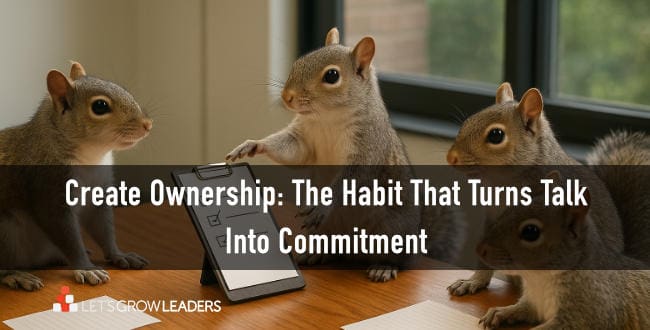Your team needs your leadership during rapid growth.
Recently, we received a great question from a manager who had taken part in a Winning Well Leadership Intensive. Her question is one you’ll face in your career – especially if you work in a fast-growing company: What do you do when the job outgrows the employee?
Here is her question with some more detail:
I have a team member who is very experienced and does their job well. But the job is evolving—going from a highly technical, responsive role, to a more proactive, management role. I don’t think they will be able to grow into the new job requirements. The thing is, they’re a valuable member of our team, and there’s lots of other work to do on our team. It will be difficult to transition them without making them feel like they’re getting demoted (which they’re not).
Steps to Take When the Job Outgrows the Employee
- Start with Confident Humility
To help navigate your own emotions, remember that when the job outgrows a person, you aren’t “doing this” to your employee. Life has happened and circumstances have changed. You are trying to help your employee and the team navigate the change in a way that helps everyone to succeed. They need you to lead.
- Share That You Care
Be sure your team member knows you care about them, their career, and that you want them to be successful now and in the future. It’s so important that they know you really value them (which you do, or you wouldn’t be thinking through this so carefully).
- Clarify What Success Looks Like
Change often happens incrementally and it’s hard to see from moment to moment. It’s important that you ditch the diaper drama and have an honest discussion about how things are changing and why. Write a new job description based on the evolved role. Be clear and specific that the “old” role will no longer exist and about what the “new” position will require. Be up front that the evolved position requires different competencies and behaviors from the previous role. (Talking about them in these terms of “new” vs “old” helps to clarify the options going forward.)
- Invite Their Perspective
Don’t assume the other person’s response. They may surprise you. Someone who looks like they could succeed in the new role may not want to go there. An employee who you suspect can’t do the new role may be interested and self-aware enough to acknowledge where they need to grow.
If they are interested in the evolved role and you have concerns about their ability to succeed, share them. Do you have specific observations you’ve noticed (and have you spoken with them about it before)? Reinforce what it will take to succeed and ask if that’s what they want to do.
- Prepare a Plan
Recognize that the growth and change are happening to your employee, to you, and to the rest of the team. How will you help the employee transition—either to the new role or a different one?
The employee may want to try the new role. If so, create a clear plan for the skills they need to master and the behaviors they need to show. Be specific about what support they can and cannot expect along with the time frame.
If they aren’t interested, how will you help them move to a role that is better suited for them? If they need to move to a different role, they’ll likely have concerns about their future if it feels like moving backward. Consider asking about areas where they want to develop and help build a plan for their continued growth. Is there any ability to put some challenging work into the new gig that really leverages their strengths?
Whatever plan you create, be sure to implement it and follow through. Finishing strong is vital to help your employee feel confident.
Your Turn
Growth can challenge leaders and their teams; it gives you an excellent opportunity to help your team members continue to grow and expand your own capacity. When the job outgrows the employee, stay grounded in your concern for doing what’s important for the team AND your concern for the employee. Let both shine through and you’ll do well.
Leave us a comment and share your best strategy for helping an employee when the job outgrows their current responsibilities.







This is a subject that fits a client situation with one or more of their employees. If I may, I would like to share this article with them.
Much appreciated.
Respectfully,
Steve
Steve. we would love that! Sharing ideas is why we write! Thank you.